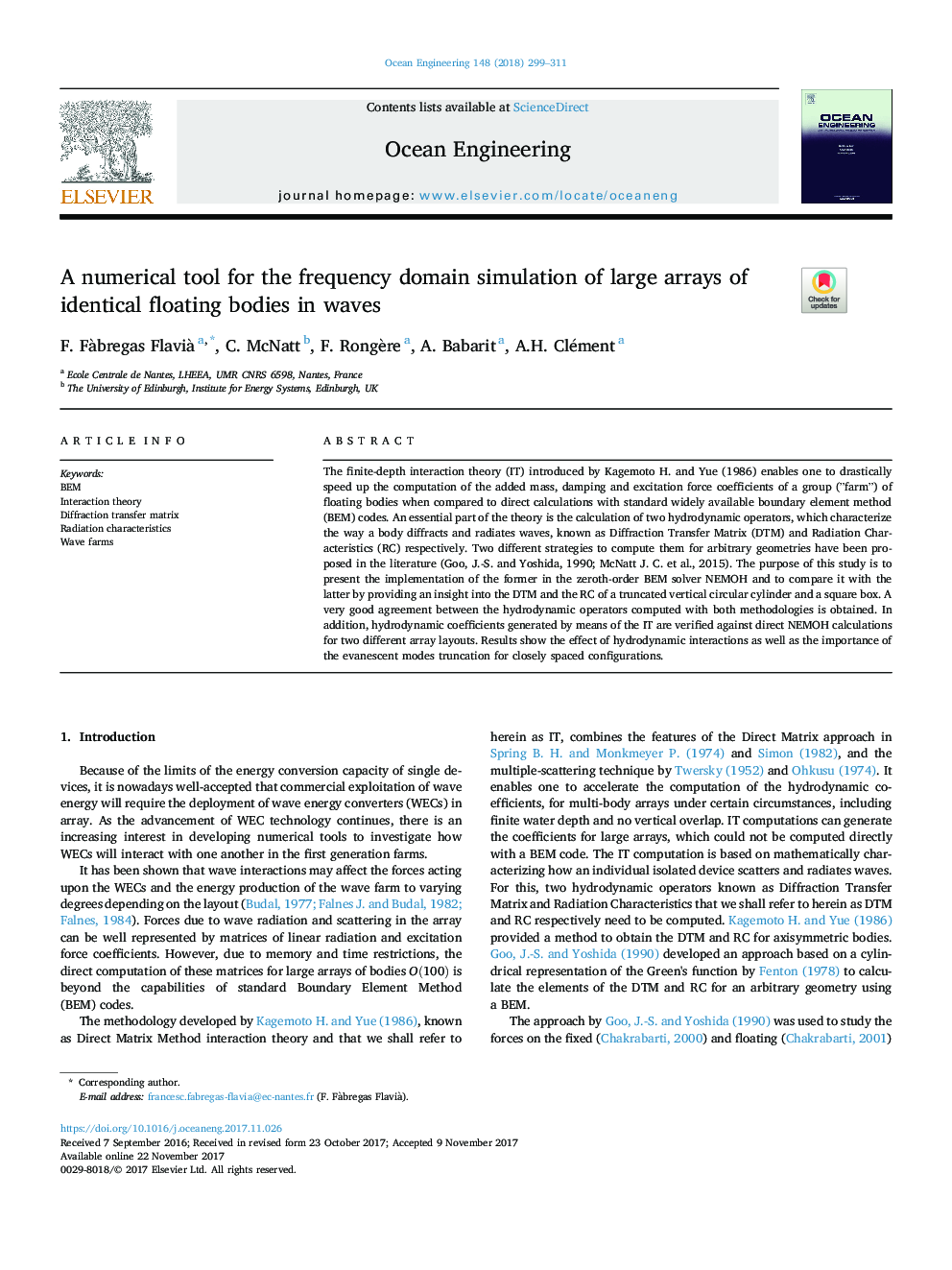| Article ID | Journal | Published Year | Pages | File Type |
|---|---|---|---|---|
| 8063590 | Ocean Engineering | 2018 | 13 Pages |
Abstract
The finite-depth interaction theory (IT) introduced by Kagemoto H. and Yue (1986) enables one to drastically speed up the computation of the added mass, damping and excitation force coefficients of a group (”farm”) of floating bodies when compared to direct calculations with standard widely available boundary element method (BEM) codes. An essential part of the theory is the calculation of two hydrodynamic operators, which characterize the way a body diffracts and radiates waves, known as Diffraction Transfer Matrix (DTM) and Radiation Characteristics (RC) respectively. Two different strategies to compute them for arbitrary geometries have been proposed in the literature (Goo, J.-S. and Yoshida, 1990; McNatt J. C. et al., 2015). The purpose of this study is to present the implementation of the former in the zeroth-order BEM solver NEMOH and to compare it with the latter by providing an insight into the DTM and the RC of a truncated vertical circular cylinder and a square box. A very good agreement between the hydrodynamic operators computed with both methodologies is obtained. In addition, hydrodynamic coefficients generated by means of the IT are verified against direct NEMOH calculations for two different array layouts. Results show the effect of hydrodynamic interactions as well as the importance of the evanescent modes truncation for closely spaced configurations.
Related Topics
Physical Sciences and Engineering
Engineering
Ocean Engineering
Authors
F. Fà bregas Flavià , C. McNatt, F. Rongère, A. Babarit, A.H. Clément,
